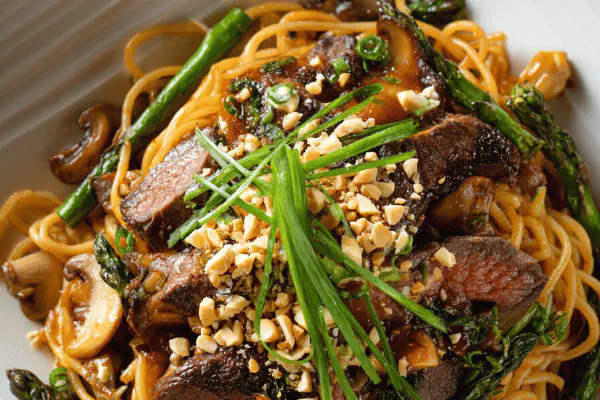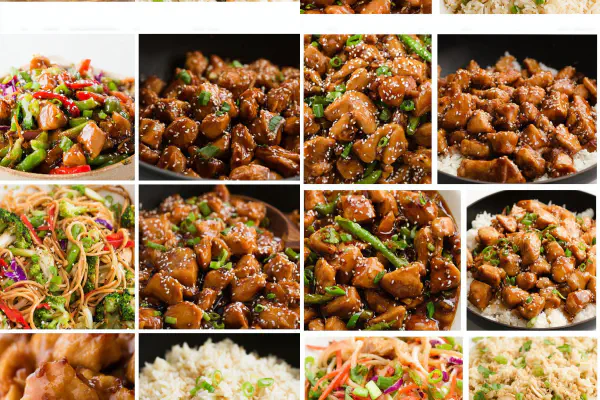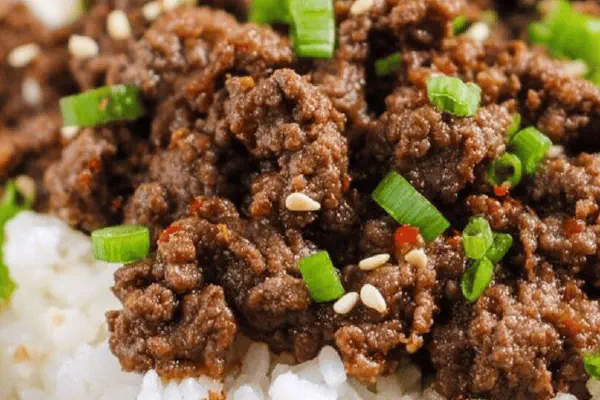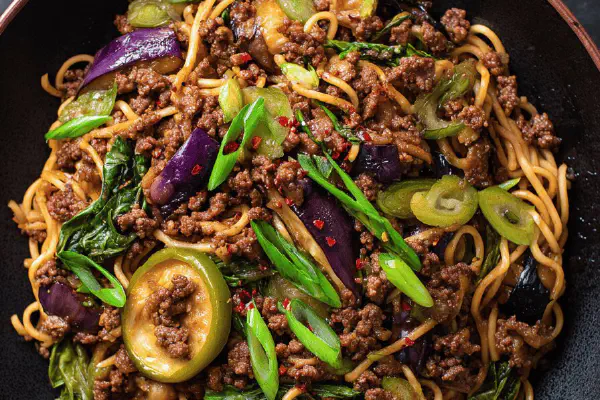Panda Styled Chow Mein
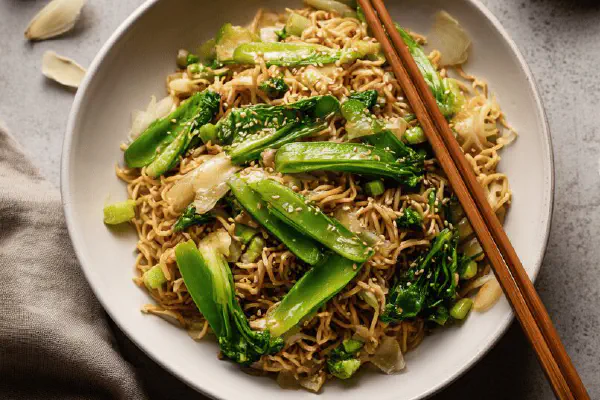
By Emma
Certified Culinary Professional
Ingredients
- 2 packs ramen noodles (discard seasoning packets)
- 1/2 head cabbage shredded
- 2 stalks celery diced
- 3 green onions sliced thin
- 2 cloves garlic minced
- 3 tbsp soy sauce
- 1 tbsp oyster sauce substitute hoisin sauce
- 1 tsp sesame oil plus 1 tsp neutral oil
- 2 tbsp vegetable oil for stir-fry
- 1 tsp sugar
- 1/4 cup water or broth
About the ingredients
Method
- Boil ramen per package but time it and stop when strands still firm yet pliable. Immediately spin dry in salad spinner or drain very well; toss with teaspoon neutral oil to keep separated.
- Mix soy sauce, hoisin, sesame oil, sugar, and water in bowl. Keep nearby.
- Heat wok high till oil shimmers but not smoking. Splash in 1 tbsp vegetable oil. Add cabbage and celery. Stir every ~30 seconds for 3-4 minutes. Watch color change to slightly translucent with edges still crisp. Not mushy.
- Push veggies aside to create a bare spot. Add 1 tbsp oil there. Toss in garlic and green onions. Stir 20-30 seconds till fragrant but not brown. Combine quickly with cabbage.
- Throw in ramen and pour sauce over. Stir fry at medium heat. Listen for sizzling but no sticking. Toss repeatedly till noodles heated through and sauce thickens slightly, about 3-5 minutes. Avoid overcooking or clumps form.
- Plate. Scatter extra green onions and a dash more soy if bland. Serve hot. Noodles should glide not stick. Veggies crisp but tender.
Cooking tips
Chef's notes
- 💡 Noodles spun dry really matter. Salad spinner key for avoiding glue. If none, paper towels but press gently. Add teaspoon neutral oil right after drying. Keeps strands separate. Timing counts—boil just till strands pliable but firm. Overcook, you get mushy glue instantly. Sauce goes last; adding early ruins crunch on noodles. Keep wok hot but green onions and garlic just bloom—don’t let brown or bitterness. Toss fast on medium after sauce in; listen for sizzle, that’s a done signal.
- 💡 Veggies need watching, forget strict times. Cabbage edges turn translucent, sheen on celery means ready crisp-tender. Color change more reliable than clock. Stir every 30 seconds, don’t overcrowd wok. Push aside to oil garlic and green onions separately to release aroma then quick mix. Sesame oil adds finish but don’t heat raw in wok—that burns fast. Oyster sauce swapped with hoisin for sweetness, works well but flavor slightly different. Water or broth in sauce thins for better coating, avoid gloops or clumps.
- 💡 If no ramen at hand, chow mein or egg noodles can substitute but dry or drain very well. Shirataki tried once; watery mess if not dried thoroughly first. Watch broth amount in sauce; too much dilutes, too little sticks and clumps noodles. Sugar balances saltiness but adjust by taste. Garlic crush/mince finely—big chunks risk burning, small bits bloom flavor faster. Vegetable oil neutral, good high heat. Olive or butter don’t play nice here—burn or heavy taste. Toss noodles gently to keep from breaking but agitate often to prevent sticking.
- 💡 Listen to wok sounds—oil shimmer, sizzle when noodles hit. That hot sound means correct temp. Push veggies to edge, add oil bare spot for green onions and garlic bloom smells punch without color change. Toss noodles in last and pour sauce quickly. Stir fry on medium till sauce thickens but noodles still glide, 3-5 minutes. Overdo and they glue. Scatter extra green onions at end for fresh pop. If bland, soy on top, but careful salt overload. Sauce should cling but not weigh noodles down. Quick toss finish leaves texture intact.
- 💡 Alternative veggies: snap peas, julienned carrots swap celery for crunch. Broth choice adds umami or earthiness—mushroom broths stand well or homemade. Chili flakes or sriracha added last if more heat wanted. Broth or water mix in sauce stops sticky patches, break up glue risk. Keep noodles shy of soft before stir frying to avoid gummy clumps. Spin drying repeats your noodle prep ritual. Wok replacement with cast iron pan works but temp control trickier. Toss fast and frequently; no noodle sitting, no clumps forming.
Common questions
What if noodles get mushy?
Fix fast. Boil less next time. Spin dry immediately. Add neutral oil after drying. Avoid early sauce mixing. Toss stir fry quick. Mush happens when overcooked or left wet. Reheat dry noodles cautiously.
Can I swap hoisin for oyster sauce?
Yes but note sweetness changes. Hoisin thicker, sweeter. Oyster slightly briny. Balance sugar in sauce accordingly. Use soy for salt base always. Try mushroom broth if umami needed plus hoisin.
Why does garlic burn easily?
Garlic bits small, cook fast. Use medium heat during bloom step. Bloom only 20-30 seconds till fragrant. Too hot or long = bitterness. Stir constantly. Oil in bare spot hot but not smoking. Garlic flavor jumps out here.
How to store leftovers?
Keep noodles separate from sauce if possible. Refrigerate in airtight container. Reheat briefly in hot pan with splash water or broth to loosen. Microwave risks drying out. Use within 2 days. Veggies get softer, noodles glue if reheated wrong.
